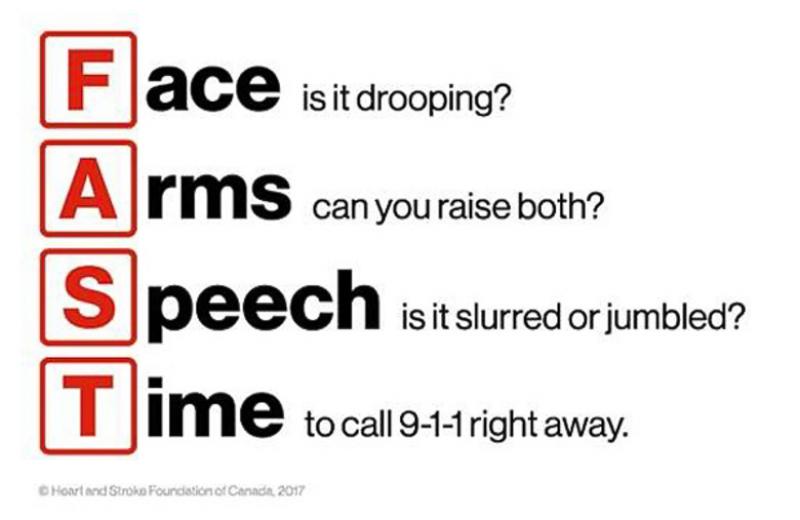June is Stroke Awareness Month in Canada, a time to learn more about what a stroke is, what the risk factors are, and what some of the key signs and symptoms may be.
What is a stroke?
A stroke occurs when blood stops flowing to a part of your brain damaging brain cells. The effects of stroke can vary depending on the part of the brain that was affected, type of stroke, and how much of the brain was damaged.
What are the risk factors of a stroke?
Did you know that stroke is one of the leading causes of death in Canada? In fact, nine out of 10 Canadians have at least one risk factor for stroke or heart disease. Risk factors for stroke include things that we cannot control (non-modifiable) and things that we can control (modifiable).
Non-modifiable risk factors that can increase your risk of stroke include:
- Age
- While a stroke can happen at any age, those over the age of 55 are at a higher risk
- Family history
- Having an immediate family member (parent, grandparent, or sibling) with stroke, especially before the age of 65.
- Certain genetic conditions.
- Ethnicity
- Being of African, Hispanic, or South Asian descent.
- Sex
- While strokes affect both men and women, it occurs more frequently in women. This is thought to be, in part, due to women having a longer life expectancy than men.
- Other risk factors specific to women include pregnancy, history of pre-eclampsia or eclampsia, gestational diabetes, oral contraceptives, and hormone replacement therapy.
- Having had a prior stroke, TIA (mini-stroke), heart attack, or certain conditions such as atrial fibrillation can significantly increase your risk for stroke.
Stroke can happen at any age, but the good news is that there are things you can do to help prevent a stroke. In fact, it's estimated that up to 80% of strokes are preventable. To decrease the risk of a stroke, you can address modifiable risk factors such as:
- Getting regular physical activity:
- Adults aged 18-64 should aim for a minimum of 150 minutes of moderate- to vigorous-intensity aerobic physical activity per week, in spurts of 10 minutes or more. Adding muscle and bone strengthening activities, at least 2 days per week, is also recommended.
- Maintaining a healthy body weight.
- Eating a healthy diet, balanced with fruits and vegetables.
- Quitting smoking.
- Drinking in moderation.
- Managing your stress levels.
- Taking steps to manage your high blood pressure and diabetes.
Visit the Heart and Stroke website to assess your risk and to learn more about how to decrease your risk for stroke.
How to recognize a stroke as it’s happening
Use the FAST (Face, Arms, Speech, Time) acronym to help recognize the signs of a stroke and take action right away:
- Face… is it drooping?
- Arms… can you raise both?
- Speech… is it slurred or jumbled?
- Time... to call 9-1-1 right away.














Comments